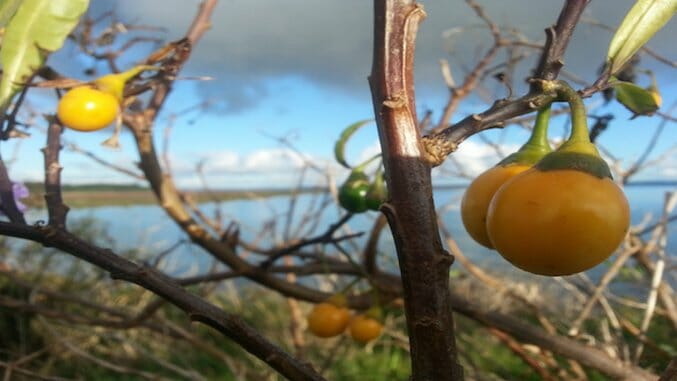Get Your Bush Tucker: 9 Native Foods to Try in Australia
Photo: Brianna Laugher/Flickr
Australia was originally inhabited by Aboriginals for 40-60,000 years. In the late 18th century,
the British decided, hey, wouldn’t that really large island down under the equator make a lovely prison colony to send our criminals? Even though Aboriginals had used native foods to survive as hunter-gatherers for thousands of years, the British weren’t really having it. They brought their own food to grow and raise, and bush tucker (native Australian cuisine) was ignored for the better part of 200 years. Thankfully, Australians started slowly using more bush tucker animals and spices in restaurants and home cooking a few decades ago. It’s not quite ubiquitous, but it’s worth finding if you want to try unique flavors and a piece of Australian history.
1. Wattleseed
Wattleseed comes from the Acacia plant, and is typically dried and roasted before being used. Once roasted, its flavor is a bit like coffee with notes of chocolate and hazelnut. Aboriginals used to grind them into a flour for damper, a flatbread that was a major staple of Aboriginal cuisine pre-European settlement. Today, wattleseed is used to flavor baked goods like muffins and breads and desserts like pavlova and ice cream, as well as in spice rubs for meat and a caffeine-free version of coffee.
2.Bush Tomatoes
Bush tomatoes come from the same family as regular tomatoes, and grow in the desert regions of Australia. The berries (also called desert raisins) produced by the plant are the size of a pea, and are gathered once they have dried on the plant. The flavor is a mix of sun dried tomato and caramel, and it is used in chutneys, relishes and scones, and to flavor strong-flavored fish like salmon and meat.
3. Finger Limes
A finger lime is a citrus fruit native to Australian rainforests in the states of Queensland and New South Wales. The name comes from its shape, which is similar to a finger and the size of a small pickle. Its skin comes in a rainbow of colors: yellow, green, red, purple and black. The coolest part is inside the fruit, tiny spheres of lime that look like green or red caviar. They burst on your tongue, filling your mouth with a strong mix of lemon, lime and herbal notes. Finger limes are used to flavor dishes as well as garnish. It’s a playful topping for raw oysters, works well with seafood like spot prawns and scallops, and can be found in marmalade, cupcakes and garnishing a pavlova.
-

-

-

-

-

-

-

-

-

-

-

-

-

-

-

-

-

-

-

-

-

-

-

-

-

-

-

-

-

-

-

-

-

-

-

-

-

-

-

-








































